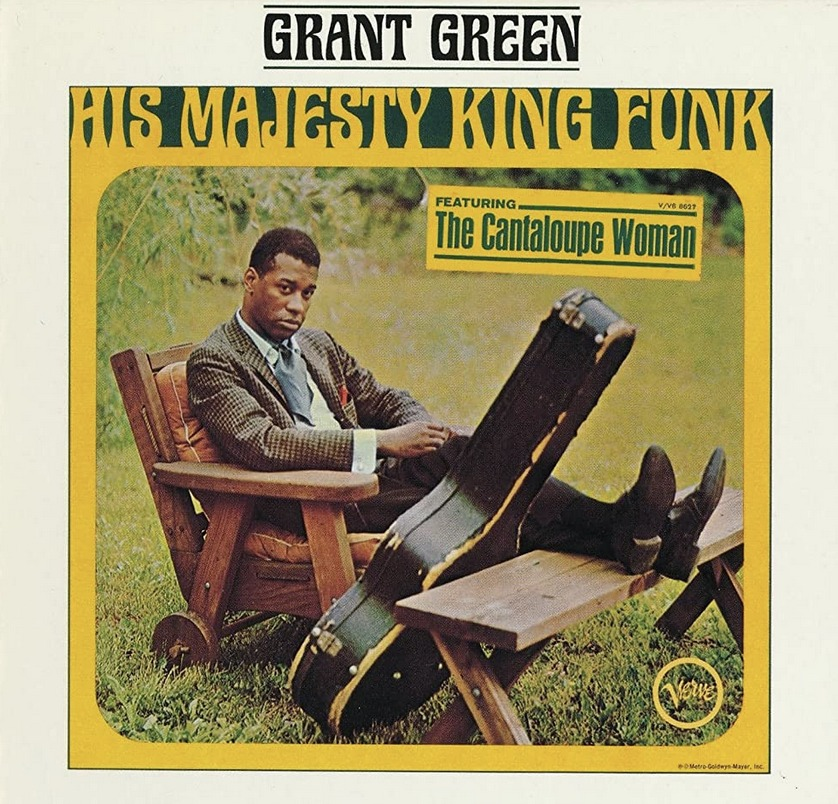Let it play in the background as you study and immerse yourself in this topic!
American jazz guitarist, composer, and bandleader Grant Green, who recorded more than 30 albums, was an only child born to John Green and Martha Green in St. Louis, Missouri, on June 6, 1935. Grant’s early music lessons on the guitar were from his father, who was also a guitarist who bought young Grant a Harmony guitar and amplifier at an early age. In addition, Grant was active in his school’s music programs, playing ukulele, participating in the drum and bugle corps, and singing in the choir in the St. Louis Public Schools.
By age 12, Grant Green performed professionally under the influence of Charlie Christian, Charlie Parker, Jimmy Smith, and Miles Davis. After leaving school in the eighth grade, he worked with numerous jazz and R&B groups in his teens and studied the guitar in St. Louis with Forrest Alcorn. Green moved to New York City in his early twenties to heighten his music career. In 1960, Lou Donaldson, a famous saxophone player, discovered Green playing in a St. Louis bar and hired him for his tour. The following year, 1961, as a side-man for Donaldson, Green was recorded Donaldson’s Here ‘Tis album. Less than a week afterward, Green recorded Grant’s First Stand, a debut album on Blue Note label as a bandleader. In 1962, he traveled and performed in Lagos, Nigeria.
Grant Green’s album Matador was recorded in 1964. However, it was not released. In 1965, Grant released his most famous work on the Blue Note label, Idle Moments. It is considered one of the top 100 jazz albums ever recorded. The following year, in 1966, Green left Blue Note and recorded His Majesty King Funk with Verve. It was the only recording for that label. The following year, in 1967, he took some time off from producing and performing to address his substance abuse. He wrestled with his addiction until 1969 and then returned that year to record the soundtrack to the Action/ Drama The Final Comedown.
In 1971, Green performed at The Watts Club Mozambique, in Detroit, Michigan, and shortly afterward that year, his album Shades of Green was released. His single from the album, “Vision,” peaked at no. 151 on Billboard 200 and remained there for nine weeks. There are numerous unreleased recordings of Grant while he was alive. In 1979, the same year Grant died, Matador was released by Blue Note label and became one of his most popular albums.
Grant Green, the father of six children, collapsed in his car after a heart attack in New York City and died on January 31, 1979. He was 43. He influenced many guitarists, including George Benson and Carlos Santana.
Do you find this information helpful? A small donation would help us keep this available to all. Forego a bottle of soda and donate its cost to us for the information you just learned, and feel good about helping to make it available to everyone.
BlackPast.org is a 501(c)(3) non-profit and our EIN is 26-1625373. Your donation is fully tax-deductible.
Dirk Laukens, “Grant Green,” https://www.jazzguitar.be/blog/grant-green/; “Grant Green (1935-1979),” https://www.revitalization2000.com/grant-green; Joe Barth, “Celebrating the Artistry of Grant Green,” https://jazzguitartoday.com/2021/10/celebrating-the-artistry-of-grant-green/.
Your support is crucial to our mission.
Donate today to help us advance Black history education and foster a more inclusive understanding of our shared cultural heritage.

